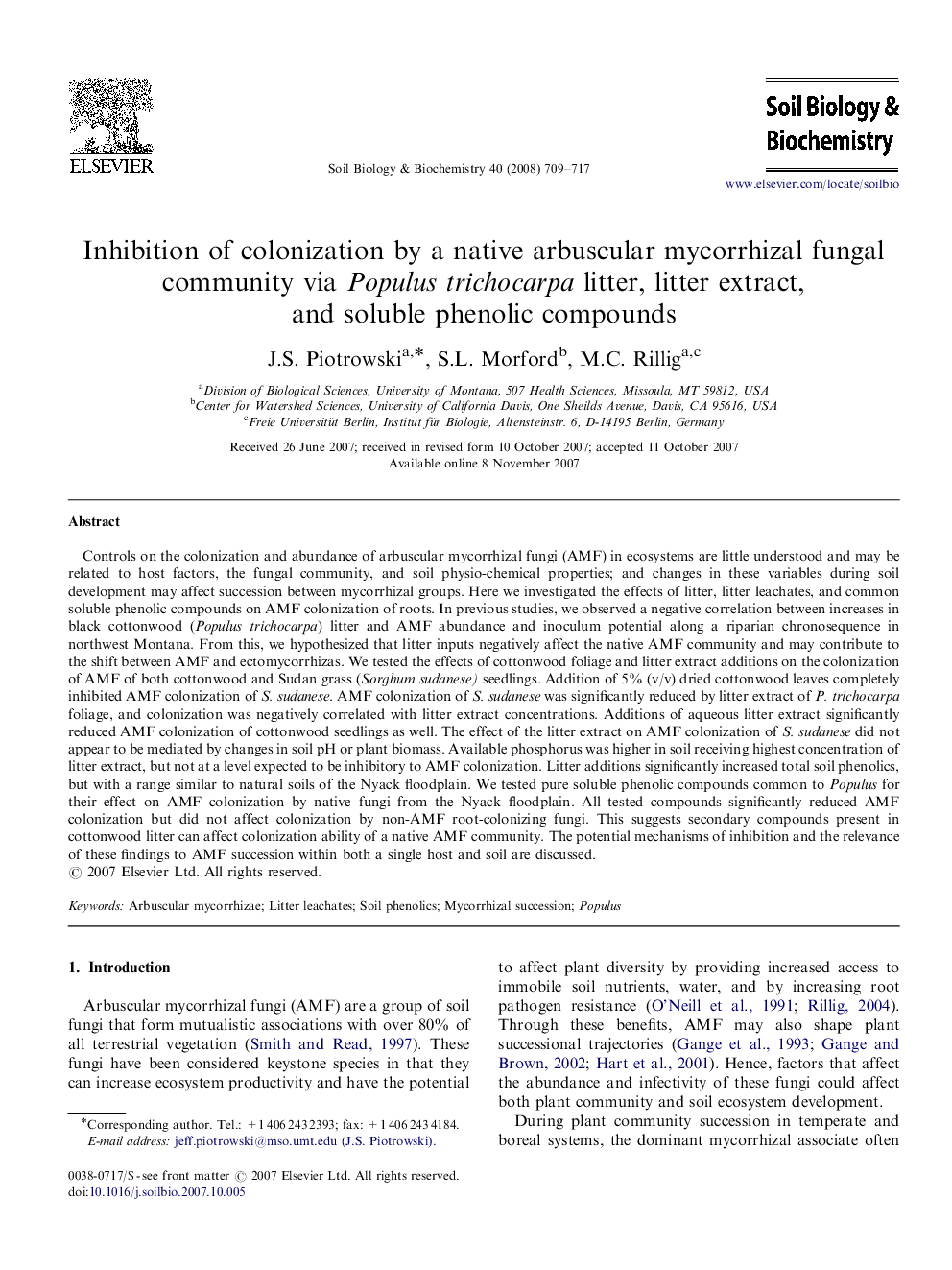| Article ID | Journal | Published Year | Pages | File Type |
|---|---|---|---|---|
| 2026997 | Soil Biology and Biochemistry | 2008 | 9 Pages |
Controls on the colonization and abundance of arbuscular mycorrhizal fungi (AMF) in ecosystems are little understood and may be related to host factors, the fungal community, and soil physio-chemical properties; and changes in these variables during soil development may affect succession between mycorrhizal groups. Here we investigated the effects of litter, litter leachates, and common soluble phenolic compounds on AMF colonization of roots. In previous studies, we observed a negative correlation between increases in black cottonwood (Populus trichocarpa) litter and AMF abundance and inoculum potential along a riparian chronosequence in northwest Montana. From this, we hypothesized that litter inputs negatively affect the native AMF community and may contribute to the shift between AMF and ectomycorrhizas. We tested the effects of cottonwood foliage and litter extract additions on the colonization of AMF of both cottonwood and Sudan grass (Sorghum sudanese) seedlings. Addition of 5% (v/v) dried cottonwood leaves completely inhibited AMF colonization of S. sudanese. AMF colonization of S. sudanese was significantly reduced by litter extract of P. trichocarpa foliage, and colonization was negatively correlated with litter extract concentrations. Additions of aqueous litter extract significantly reduced AMF colonization of cottonwood seedlings as well. The effect of the litter extract on AMF colonization of S. sudanese did not appear to be mediated by changes in soil pH or plant biomass. Available phosphorus was higher in soil receiving highest concentration of litter extract, but not at a level expected to be inhibitory to AMF colonization. Litter additions significantly increased total soil phenolics, but with a range similar to natural soils of the Nyack floodplain. We tested pure soluble phenolic compounds common to Populus for their effect on AMF colonization by native fungi from the Nyack floodplain. All tested compounds significantly reduced AMF colonization but did not affect colonization by non-AMF root-colonizing fungi. This suggests secondary compounds present in cottonwood litter can affect colonization ability of a native AMF community. The potential mechanisms of inhibition and the relevance of these findings to AMF succession within both a single host and soil are discussed.
